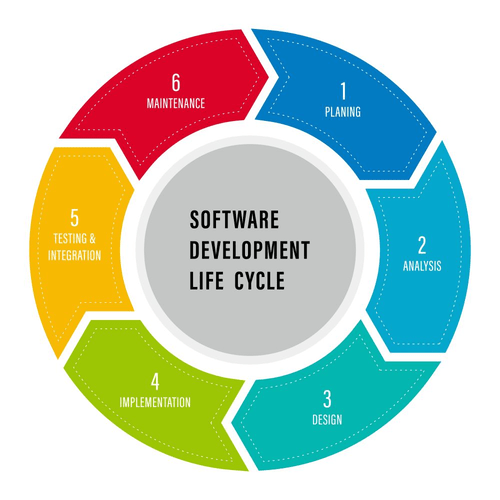Content
Different types of performance tests provide you with different data, as we will further detail. Stress testing is a type of testing that determines the stability and robustness of the system. This testing technique uses auto-generated simulation model that checks all the hypothetical scenarios. Performance tests should be run as part of a continuous load test definition integration and deployment process to ensure they’re consistently run on schedule. To continue with the previous example, instead of stopping at around 30 users , you’d continue to increase the user load on the system. Your stress test discovers that up to the load size of 41 users, the system functions, despite the increase in page time.
- Stress testing can achieve higher branch coverage by producing the conditions under which certain error handling branches are followed.
- Capacity testing is sometimes called scalability testing, and helps identify the maximum capacity of users the system can support, while not exceeding a maximum defined page time.
- The software testing world is based on numerous types of tests that each and every one of them has a different purpose and is executed in different stages.
- It is worth noting that depending on the application, software, or even technology being used in your environment/system, what metrics you measure during a stress test could vary.
- The focus of the test can be to see how a specific function is handling high-load or as a test that generates production-like transactions with a higher than expected throughput.
- A load test ensures that a network system can handle an expected volume of traffic and how it behaves when bombarded with specific levels of simultaneous requests.
Our team at LoadView is available to support you and your development team to get the most out of your load and stress testing process and budget. Load tests are best performed in a production environment to understand average response times under expected user load. These average response times become the baseline for acceptable SLAs.
When do you use Performance Testing?
Either way, investing in a performance testing tool is certainly a good choice. Load testinghelps developers understand the behavior of a system under a specific load value. In the load testing process, an organization simulates the expected number of concurrent users and transactions over a duration of time to verify expected response times and locate bottlenecks. This type of test helps developers determine how many users an application or system can handle before that app or system goes live. Additionally, a developer can load test-specific functionalities of an application, such as a checkout cart on a webpage. A team can include load testing as part of acontinuous integration process, in which they immediately test changes to a codebase through the use of automation tools, such asJenkins.
The focus of the test can be to see how a specific function is handling high-load or as a test that generates production-like transactions with a higher than expected throughput. Performance tests can include a number of different types of tests that test specific performance instances. Analyze and retest.Look over the resulting test data, and share it with the project team. After any fine-tuning, retest to see if there is an increase or decrease in performance.
When should you run load tests?
By identifying performance issues, companies will have room for improving user experience before the product is out. In addition, stress testing helps to identify the system’s weaknesses and improve the system’s security before releasing the product on the market. Load testing helps software developers know the peak points of their software products when setting user capacity and optimization goals for their software. The software testing world is based on numerous types of tests that each and every one of them has a different purpose and is executed in different stages.

Soak testing, also called endurance testing, simulates a steady increase of end users over time to test a system’s long-term sustainability. During the test, the test engineer monitors KPIs, such as memory usage, and checks for failures, like memory shortages. Soak tests also analyze throughput and response times after sustained use to show if these metrics are consistent with their status at the beginning of a test. Stress testing is a kind of performance testing that happens when you push your app, API or software to the upper limits of its capacity. The primary goal of carrying our performance testing is to set the standards and benchmarks for the product. Performance testing indicates how a software product behaves under regular parameters.
The differences between load tests and stress tests
You’ll find out about each type of testing and learn about the differences between them. Many other types of tests exist to verify the integration between components, such as integration tests. It works to reveal how your system will hold up under a sudden surge of demand when your current number of users goes beyond the maximum levels you can support. Or, if you don’t know what that maximum level is, stress testing is a good way of establishing where it falls. Performance testing has stress testing and load testing as its components.

The software being tested is “mission critical”, that is, failure of the software would have disastrous consequences. Make sure the external services you depend on don’t stop working after a certain amount of requests are executed. With a soak test you can simulate days worth of traffic in only a few hours. It also allows you to find bottlenecks before they occur and choke your business. This Hiring Kit from TechRepublic Premium provides an adjustable framework your business can use to find, recruit and ultimately hire …
Cloud performance testing
Load testing helps developers better understand how an increase in user volume affects the system performance. With load testing, companies have the opportunity to enhance the user experience before the product’s release by detecting performance issues. It is important to note that the terms baseline testing and benchmark testing are often used interchangeably, however, there are differences between these two terms.
In contrast, a stress test overloads a system to find the breaking point. Sample testing A word processor by changing the large amount of data. Objective Allows you to see how an app responds when the load increases to https://globalcloudteam.com/ a breaking point. With our increasingly heavy reliance on digital technology, IT teams are having to handle… Performance testing an organization’s IVR system is crucial to maintain a positive customer experience.
Load Testing for Capacity Planning
This is a good test, given the growing number of users does not affect the response time, the error rate remains low, and the hits per second are in line with the number of virtual users. Comparing actual metrics (response time, throughput, percentage of errors, resource usage, etc.) with the expected metrics. Performance testing is a type of testing for determining the speed of a computer, network or device.

